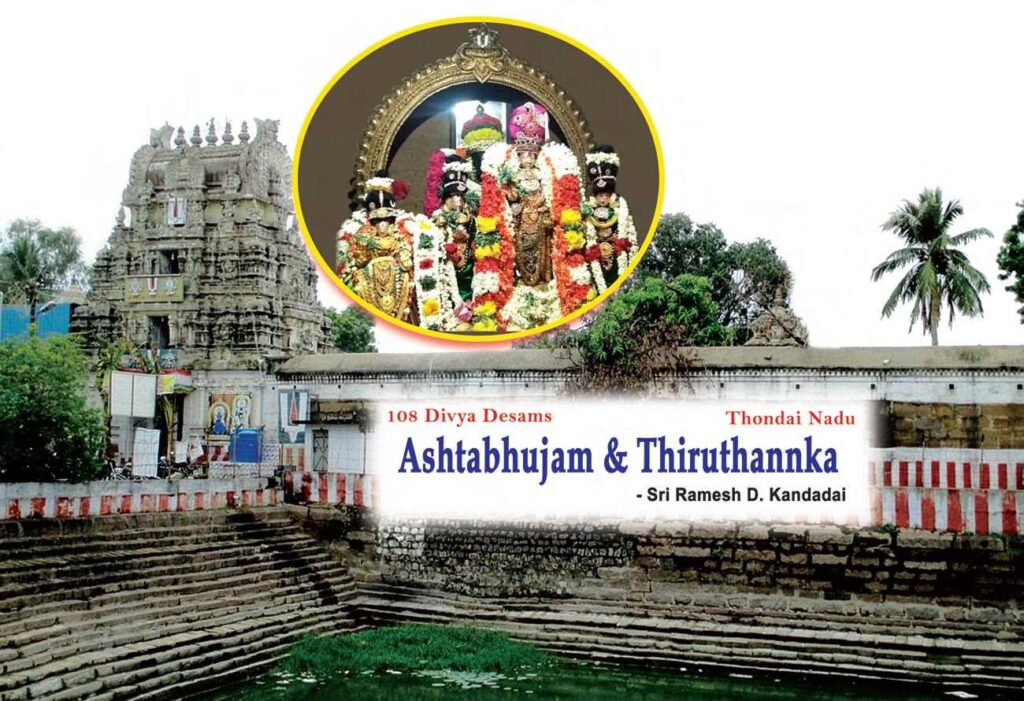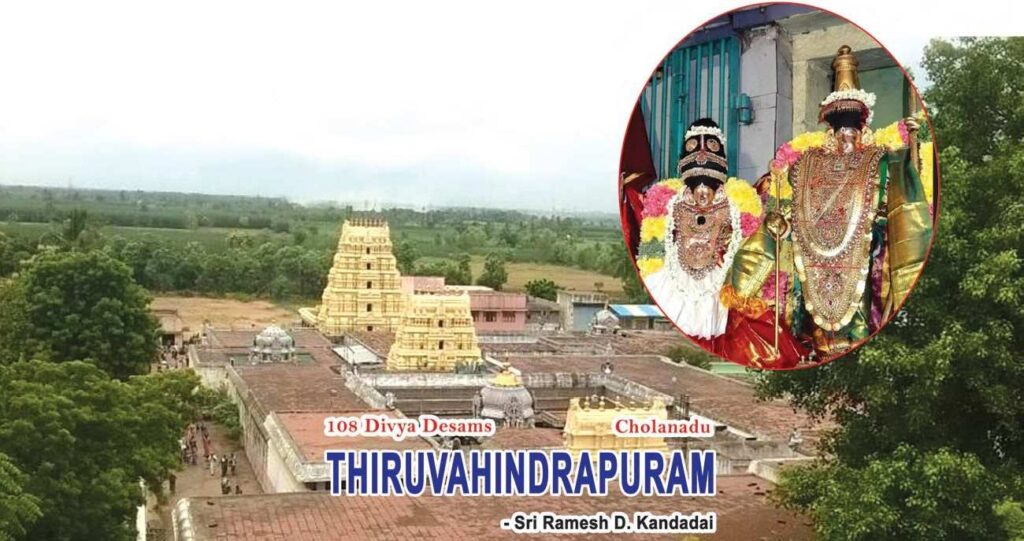Thiruppukuzhi / Tiruputkuzhi – Introduction Approximately seventy-five km due west and a little south of Chennai on the Chennai–Bengaluru national highway lies a small hamlet called Thiruppukuzhi / Tiruputkuzhi. According to the local legend, it is intimately connected with Jatayu and the Adhi Kavya, the Ramayana. Depending on the source of information available, Jatayu is either an Read More
Tag: 108 divya desams
A Divya Desham or Vaishnava Divya Desam is one of the 108 Vishnu and Lakshmi temples that is mentioned in the works of the Alvars, there are a total of 108 Divya Desams.
Ashtabhujam & Thiruthannka – Kanchipuram (108 Divya Desams)
Location of Ashtabhuja Perumal Temple About a 2-hour drive due west and a little south of Chennai, it is located just off the Chennai– Bengaluru national highway. The nearest airport is Chennai. A total of 15 Divya Desams are in Kanchipuram. Ashtabhujam temple is located in Ennaikaran, about 2 km from Sri Varadarajaswamy temple and Thiruthannka Read More
Sri Devanayakan Temple, Thiruvahindrapuram (108 Divya Desams)
Sri Devanayakan Temple Thiruvahindrapuram – Location The distance between Thiruvahindrapuram and Chennai is 200 km. It is towards the west of the town of Cuddalore. Thiruvahindrapuram is one of the most famous Divya Desams. A part of the temple is at the ground level whereas the other half is on a small hillock. The temple’s Read More
Thirumanikkoodam & Thiruvellakulam & Thiruparthanpalli (108 Divya Desams)
(All Part of Thirunangur Eleven Divya Desam) Location: As can be seen from the map, all three places Thirumanikkoodam & Thiruvellakulam & Thiruparthanpalli are within a few km of Thirunangur which itself is a few km away from Mayiladuthurai in Tamil Nadu. Thirumanikkoodam Sthalapuranam This divya desam is like that of Kanchi Varadaraja perumal. He Read More
Thirukavalampadi & Thiruarimeyavinnagaram & Thiruvannpurushutamam (108 Divya Desams)
(All parts of the Thirunangur Eleven) Location – As it can be seen from the map, these Divya Desams are located at a distance of 150 km east of Srirangam and close to the town of Mayiladuthurai. These are the 6th, 7th and 8th of Divya Desams of the Thirunangur Eleven. THIRUKAVALAMPADI Sri Rajagopala Swamy Read More
Sri Soundaraja perumal temple, Thirunagai (108 Divya Desams)
Sri Soundaraja Perumal Temple Location Sri Soundaraja Perumal temple, Thirunagai Divya desam is located just a little off the coast of the Bay of Bengal near Nagapattinam is a cluster of divya desams scattered around. Three of these small villages/ towns are what we will look into today. Thirunagai – This is a town located Read More
Sri Loganatha Perumal, Thirukannangudi (108 Divya Desams)
Sri Loganatha Perumal Temple Location Sri Loganatha Perumal, Thirukannangudi divya desam is located just a little off the coast of the Bay of Bengal near Nagapattinam is a cluster of divya desams scattered around. Three of these small villages/ towns are what we will look into today. Thirukannangudi – A small village located just a Read More
Sri Sowriraja Perumal, Thirukkannapuram(108 Divya Desams)
Sri Sowriraja Perumal Temple Location Sri Sowriraja Perumal, Thirukkannapuram divya desam is located just a little off the coast of the Bay of Bengal near Nagapattinam is a cluster of divya desams scattered around. Three of these small villages/ towns are what we will look into today. Thirukkannapuram village is located 140 km east of Read More
Thanjai Maamani Koil & Thirunandipuravinnagaram & Thiruvelliangudi (108 Divya Desams)
The land about 50km north and south of Kaveri, Kollidam is profuse with tributaries of Kaveri – the area being the delta of the Kaveri River. There is a treasure trove of history, mythology and religion all manifest in the form of temples dotting the landscape. Thanjai Maamani Koil Location Just north of Thanjavur town Read More
Sri Vaikuntanathan Temple, Nangur (108 Divya Desams)
Sri Vaikuntanathan Temple Location As one can see from the map, Sri Vaikuntanathan Temple Divya Desam is located 150 km east of Srirangam which is close to the town of Mayiladuthurai. These are the 9th, 10th and 11th of Divya Desams of the Thirunangur Eleven. Click here for the Google Maps location THIRUVAIKUNDAVINNAGARAM Sri Vaikuntanathan Temple Read More


